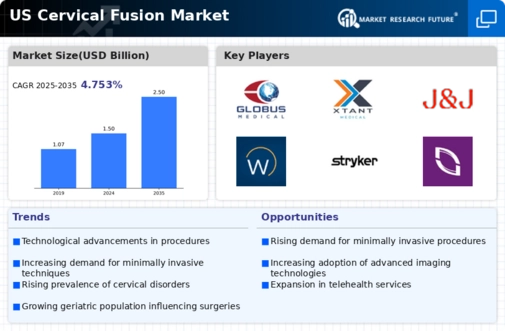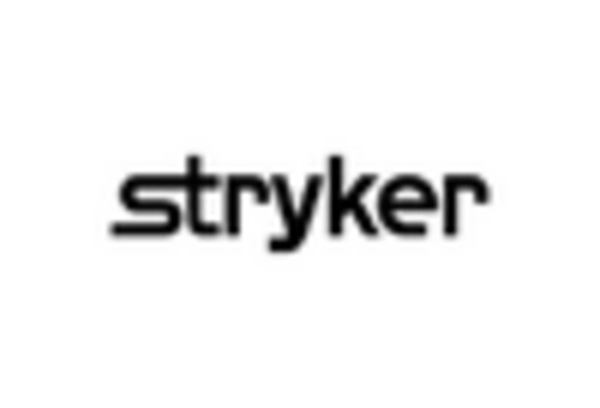Increased Healthcare Expenditure
Rising healthcare expenditures in the United States are benefiting the cervical fusion market. As healthcare budgets expand, more resources are allocated to surgical interventions, including cervical fusion procedures. In 2025, healthcare spending in the US is expected to reach approximately $4 trillion, with a significant portion directed towards orthopedic and spinal care. This increase in funding may lead to improved access to surgical options for patients suffering from cervical spine disorders. Consequently, the cervical fusion market could see a surge in demand as more individuals seek treatment for their conditions, supported by enhanced healthcare infrastructure.
Rising Incidence of Spinal Disorders
The cervical fusion market is growing due to the increasing prevalence of spinal disorders, especially among the aging population. Conditions such as cervical spondylosis and herniated discs are becoming more common, leading to a higher demand for surgical interventions. According to recent data, spinal disorders affect approximately 80% of individuals at some point in their lives, with a significant portion requiring surgical solutions. This trend is likely to drive the cervical fusion market as healthcare providers seek effective treatment options to alleviate pain and restore mobility. Furthermore, advancements in surgical techniques and postoperative care are enhancing patient outcomes, which may further encourage the adoption of cervical fusion procedures.
Growing Awareness of Treatment Options
There is a notable increase in awareness regarding treatment options for cervical spine disorders, which is positively impacting the cervical fusion market. Patients are becoming more informed about the benefits of surgical interventions, leading to higher rates of consultation with healthcare professionals. Educational campaigns and resources provided by medical organizations are contributing to this trend, helping patients understand the potential advantages of cervical fusion. As awareness grows, it is likely that more individuals will opt for surgical solutions, thereby driving demand within the cervical fusion market.
Regulatory Support for Innovative Solutions
Regulatory bodies in the United States are increasingly supporting innovative solutions in the cervical fusion market. The approval of new devices and techniques is being expedited to meet the growing demand for effective spinal treatments. This regulatory support encourages manufacturers to invest in research and development, leading to the introduction of novel products that enhance surgical outcomes. As a result, the cervical fusion market is expected to expand, with a wider array of options available to healthcare providers and patients alike.
Technological Advancements in Surgical Procedures
Technological innovations are playing a crucial role in shaping the cervical fusion market. The introduction of advanced surgical instruments, imaging technologies, and robotic-assisted systems is enhancing the precision and safety of cervical fusion surgeries. For instance, the use of intraoperative imaging allows surgeons to visualize the surgical site in real-time, improving accuracy during procedures. Additionally, minimally invasive techniques are gaining traction, as they typically result in shorter recovery times and reduced hospital stays. The market is projected to grow as these technologies become more widely adopted, potentially increasing the number of cervical fusion surgeries performed annually.

















Leave a Comment